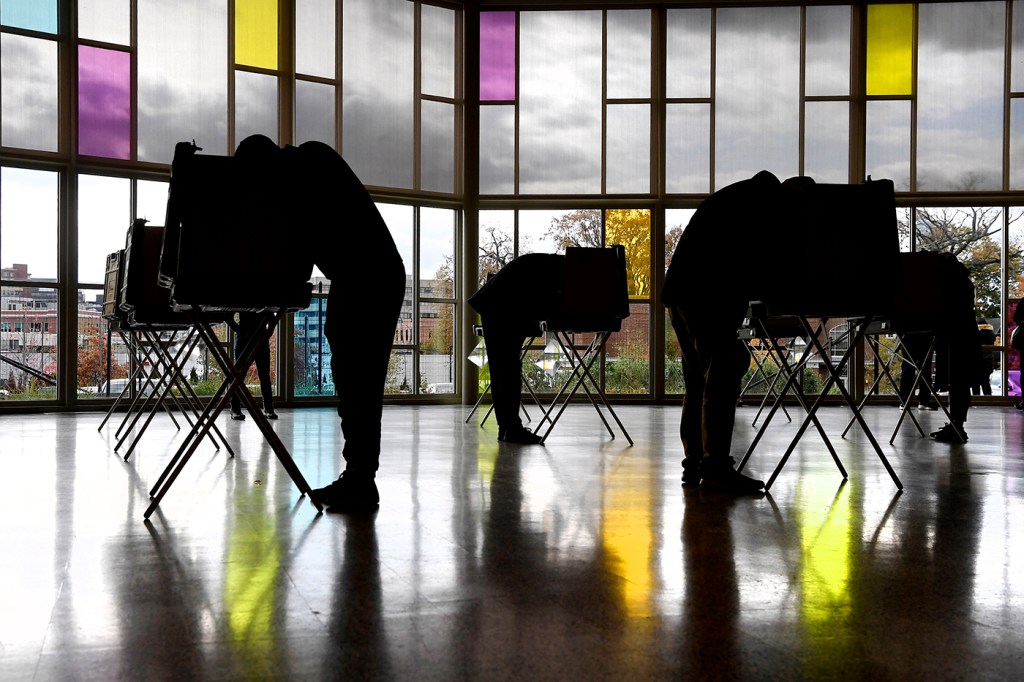The polls were still way off in the 2020 election—even after accounting for 2016’s errors

It may well be days, if not weeks, before the winner of the 2020 presidential race is decided, but one clear lesson from Tuesday night’s election results is that pollsters were wrong again. It’s a “giant mystery” why, says Nick Beauchamp, assistant professor of political science at Northeastern.
There are a number of possible explanations, Beauchamp says. One is that specific polls undercounted the extent to which certain demographics—such as Hispanic voters in specific states—shifted toward President Trump.

Nick Beauchamp, assistant professor of political science. Photo Matthew Modoono/Northeastern University
Another is that, just as in 2016, polls undercounted hard-to-reach voters who tend to be less educated and more conservative. Beauchamp is less convinced that “shy” Trump voters deliberately misrepresented their intentions to pollsters.
“Whatever the cause, it has huge implications not just for polling, but for the outcome of the presidential and Senate elections,” Beauchamp says. “If the polls have been this wrong for months, since they have been fairly stable for months, that means that campaign resources may have also been misallocated.”
Beauchamp pointed to a tweet by political pollster Josh Jordan, which showed just how much Trump over-performed the FiveThirtyEight averages in nine swing states.
In Ohio, for example, he ran seven points better. In Wisconsin, it was eight points.
“Trump over-performed relative to the polls in these states by a median of 6 points,” says Beauchamp. “That’s a shockingly large error, though in other states it may have been smaller.”
This year’s polling errors, Beauchamp said, were “enormous” even compared to 2016, when polls failed to predict Trump’s defeat of Democratic nominee Hillary Clinton.
Indeed, just days before the presidential contest, FiveThirtyEight founder Nate Silver predicted that Biden was slightly favored to win Florida and its 29 Electoral College votes. The race was called on election night with Trump comfortably ahead.
“I think Nate Silver and the other pollsters are saying ‘Well that’s just within the bounds of systematic polling,’ but it seems awfully large to me for just that,” Beauchamp says.
Now, election watchers and media leaders are questioning the value of polling overall. Washington Post media columnist Margaret Sullivan wrote that “we should never again put as much stock in public opinion polls, and those who interpret them, as we’ve grown accustomed to doing.”
“Polling,” she wrote, “seems to be irrevocably broken, or at least our understanding of how seriously to take it is.”
Polling misses aren’t unique to the United States, Beauchamp points out. Polls also failed to predict the 2015 elections in the United Kingdom, as well as the UK’s 2016 “Brexit” vote to exit the European Union.
In those cases, as with the 2016 US election, Beauchamp said, pollsters “made these mistakes, which are relatively small, but in the same direction and with fairly significant effects.”
To avoid a repeat of 2016 and 2020 in the United States, Beauchamp says, pollsters should shift their tactics—and perhaps attach different weights to factors they’re trying to measure, such as social distrust or propensity to be a non-voter.
“Hopefully they’re going to start modeling all of that information as a way to better capture these issues in voters,” Beauchamp says.
For media inquiries, please contact media@northeastern.edu.